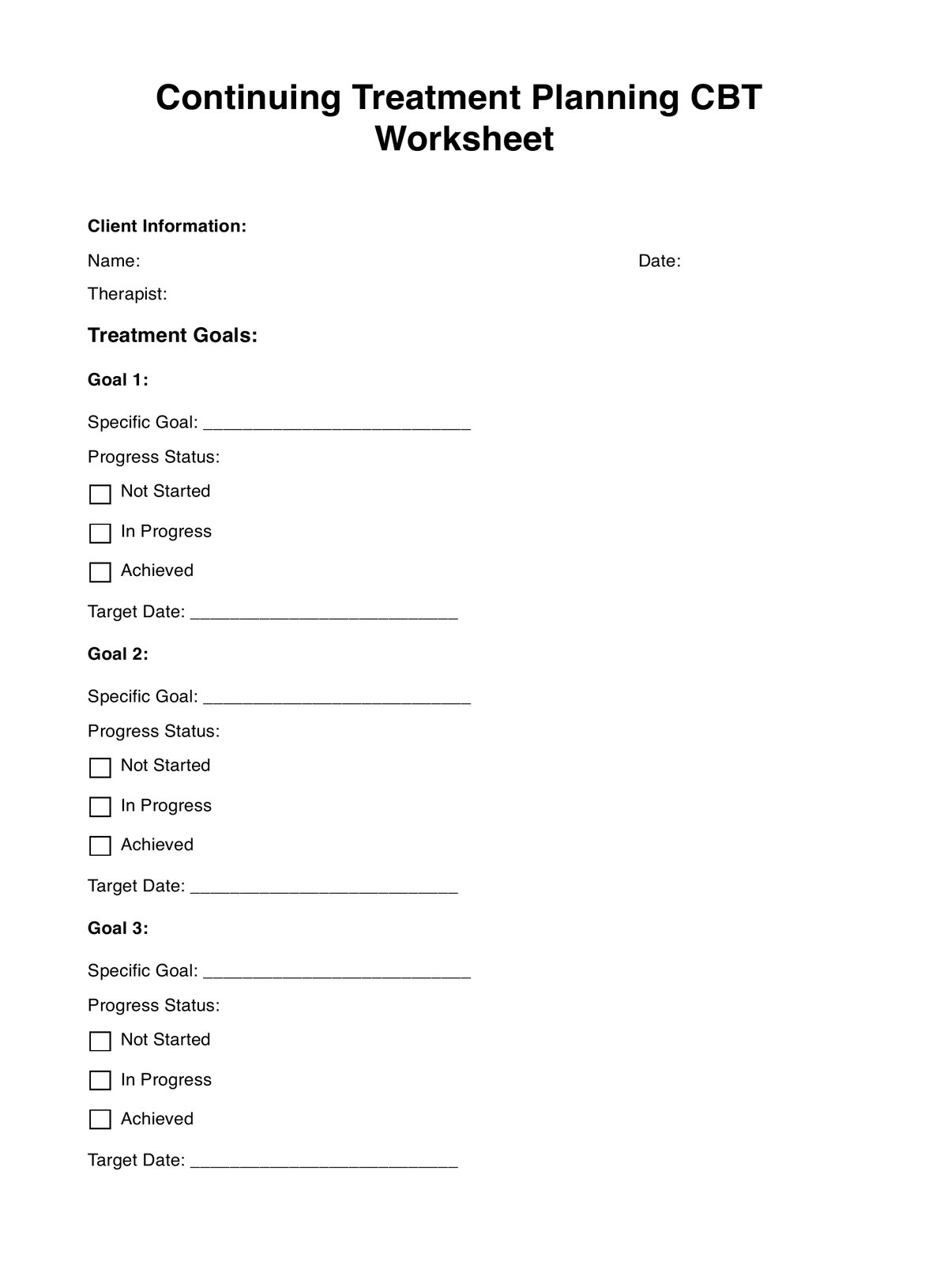The time required varies depending on the case's complexity and the assessment's thoroughness. Typically, it can take anywhere from 30 minutes to an hour.

Continuing Treatment Planning CBT Worksheet
Learn how to use the Continuing Treatment Planning CBT Worksheet, its benefits, and when it's most effective. Free PDF download available.
Use Template
Continuing Treatment Planning CBT Worksheet Template
Commonly asked questions
The worksheet helps practitioners organize treatment plans, set clear goals, and monitor progress. It's a valuable tool for ensuring structured and evidence-based care.
This worksheet is best used when planning cognitive-behavioral therapy sessions, especially for individuals with substance abuse issues.
EHR and practice management software
Get started for free
*No credit card required
Free
$0/usd
Unlimited clients
Telehealth
1GB of storage
Client portal text
Automated billing and online payments











